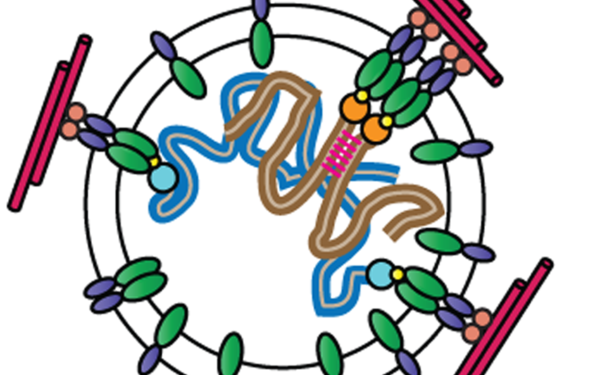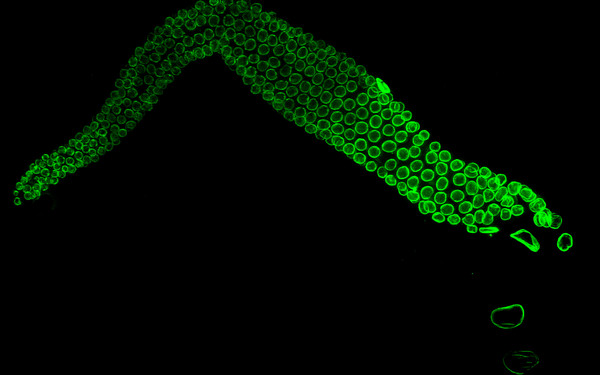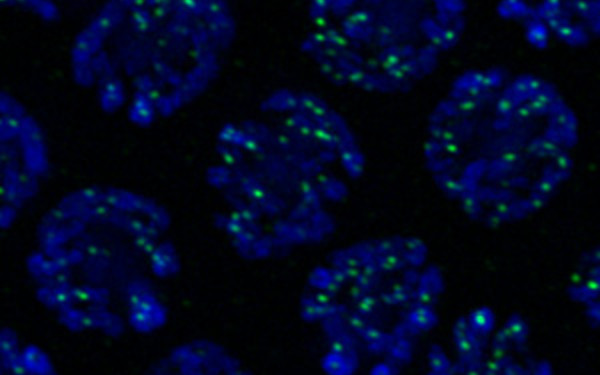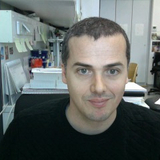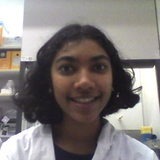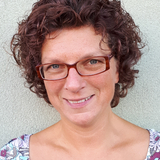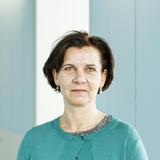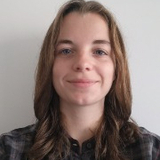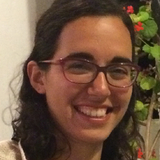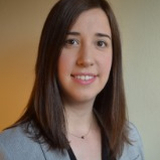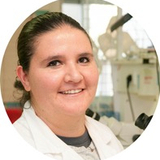Release of CHK-2 from PPM-1.D anchorage schedules meiotic entry.
2022 Science advances;8(7):eabl8861.
PMID: 35171669
Baudrimont Antoine, Paouneskou Dimitra, Mohammad Ariz, Lichtenberger Raffael, Blundon Joshua, Kim Yumi, Hartl Markus, Falk Sebastian, Schedl Tim, Jantsch Verena
Caenorhabditis elegans RMI2 functional homolog-2 (RMIF-2) and RMI1 (RMH-1) have both overlapping and distinct meiotic functions within the BTR complex.
2021 PLoS genetics;17(7):e1009663.
PMID: 34252074
Velkova Maria, Silva Nicola, Dello Stritto Maria Rosaria, Schleiffer Alexander, Barraud Pierre, Hartl Markus, Jantsch Verena
DNA topoisomerase 3 is required for efficient germ cell quality control.
2021 The Journal of cell biology;220(6)
PMID: 33798260
Dello Stritto Maria Rosaria, Bauer Bernd, Barraud Pierre, Jantsch Verena
Transient and Partial Nuclear Lamina Disruption Promotes Chromosome Movement in Early Meiotic Prophase.
2018 Developmental cell;45(2):212, 225.e7, 212-225.e7.
PMID: 29689196
Link Jana, Paouneskou Dimitra, Velkova Maria, Daryabeigi Anahita, Laos Triin, Labella Sara, Barroso Consuelo, Pacheco Piñol Sarai, Montoya Alex, Kramer Holger, Woglar Alexander, Baudrimont Antoine, Markert Sebastian Mathias, Stigloher Christian, Martinez-Perez Enrique, Dammermann Alexander, Alsheimer Manfred, Zetka Monique, Jantsch Verena
Separable Roles for a Caenorhabditis elegans RMI1 Homolog in Promoting and Antagonizing Meiotic Crossovers Ensure Faithful Chromosome Inheritance.
2016 PLoS biology;14(3):e1002412.
PMID: 27011106
Jagut Marlène, Hamminger Patricia, Woglar Alexander, Millonigg Sophia, Paulin Luis, Mikl Martin, Dello Stritto Maria Rosaria, Tang Lois, Habacher Cornelia, Tam Angela, Gallach Miguel, von Haeseler Arndt, Villeneuve Anne M, Jantsch Verena
Matefin/SUN-1 phosphorylation is part of a surveillance mechanism to coordinate chromosome synapsis and recombination with meiotic progression and chromosome movement.
2013 PLoS genetics;9(3):e1003335.
PMID: 23505384
Woglar Alexander, Daryabeigi Anahita, Adamo Adele, Habacher Cornelia, Machacek Thomas, La Volpe Adriana, Jantsch Verena
Leptotene/zygotene chromosome movement via the SUN/KASH protein bridge in Caenorhabditis elegans.
2010 PLoS genetics;6(11):e1001219.
PMID: 21124819
Baudrimont Antoine, Penkner Alexandra, Woglar Alexander, Machacek Thomas, Wegrostek Christina, Gloggnitzer Jiradet, Fridkin Alexandra, Klein Franz, Gruenbaum Yosef, Pasierbek Pawel, Jantsch Verena
Meiotic chromosome homology search involves modifications of the nuclear envelope protein Matefin/SUN-1.
2009 Cell;139(5):920, 933, 920-33.
PMID: 19913286
Penkner Alexandra M, Fridkin Alexandra, Gloggnitzer Jiradet, Baudrimont Antoine, Machacek Thomas, Woglar Alexander, Csaszar Edina, Pasierbek Pawel, Ammerer Gustav, Gruenbaum Yosef, Jantsch Verena
A conserved function for a Caenorhabditis elegans Com1/Sae2/CtIP protein homolog in meiotic recombination.
2007 The EMBO journal;26(24):5071, 5082, 5071-82.
PMID: 18007596
Penkner Alexandra, Portik-Dobos Zsuzsanna, Tang Lois, Schnabel Ralf, Novatchkova Maria, Jantsch Verena, Loidl Josef
The nuclear envelope protein Matefin/SUN-1 is required for homologous pairing in C. elegans meiosis.
2007 Developmental cell;12(6):873, 885, 873-85.
PMID: 17543861
Penkner Alexandra, Tang Lois, Novatchkova Maria, Ladurner Markus, Fridkin Alexandra, Gruenbaum Yosef, Schweizer Dieter, Loidl Josef, Jantsch Verena
